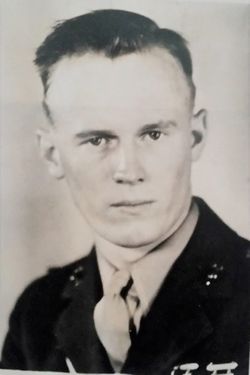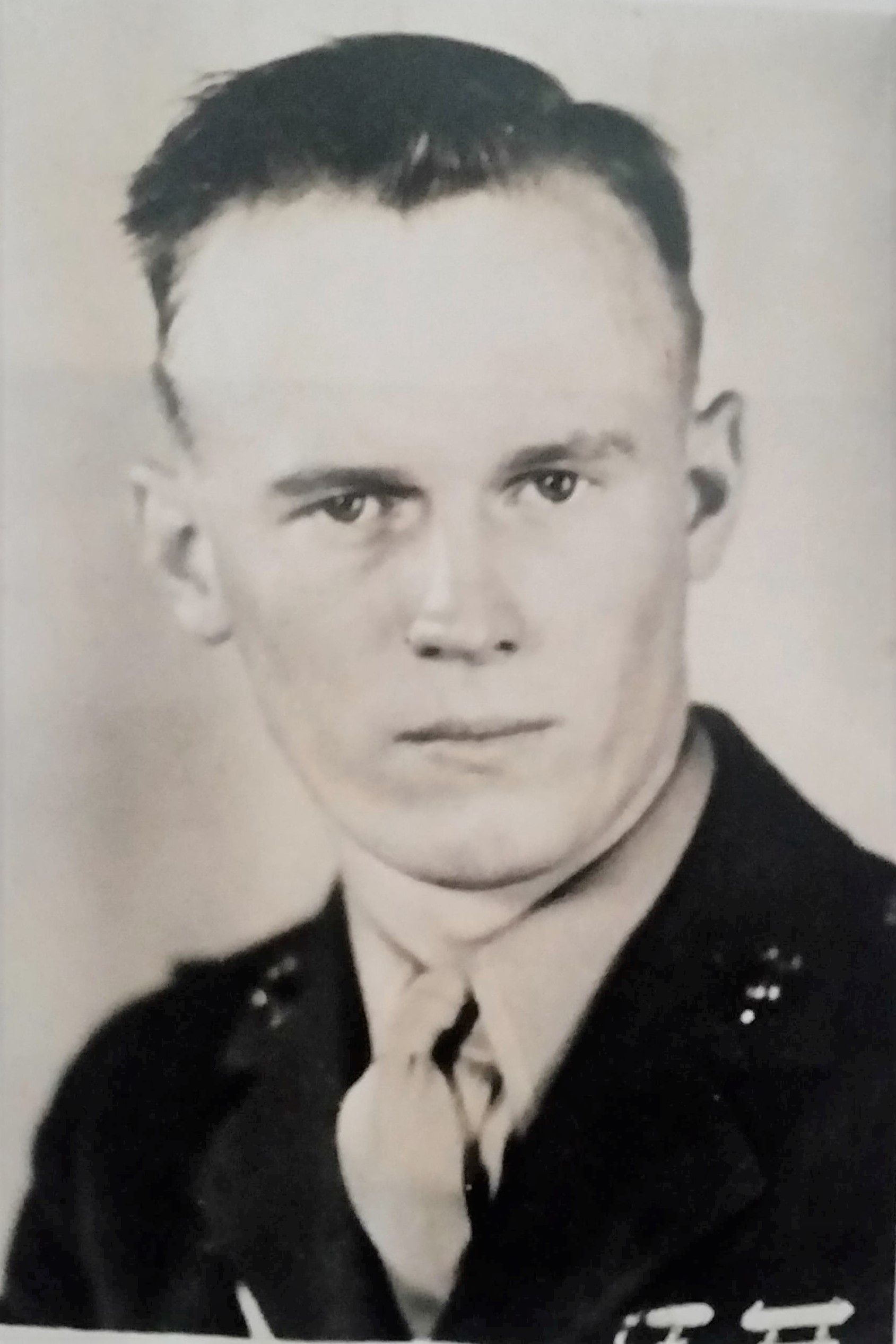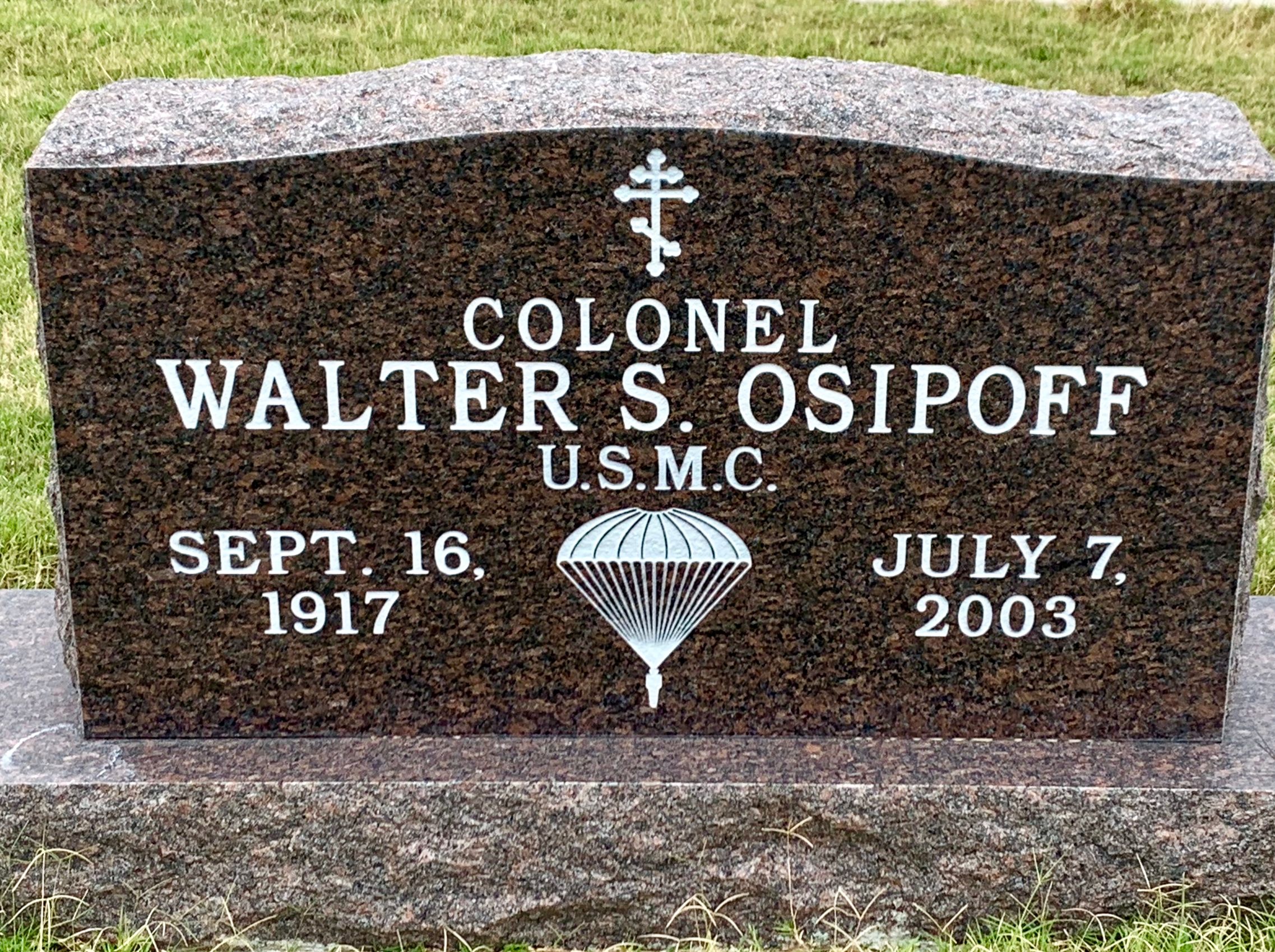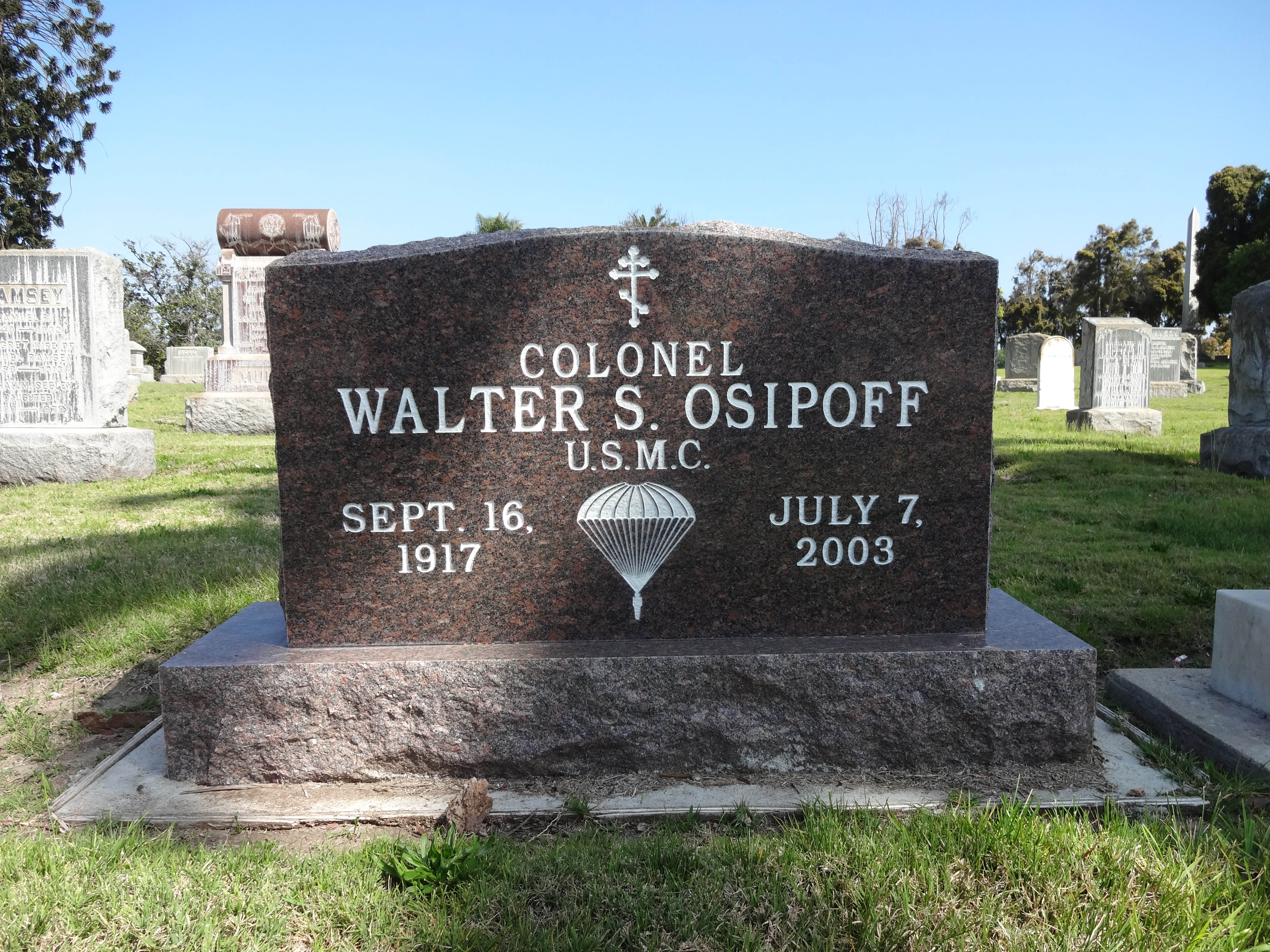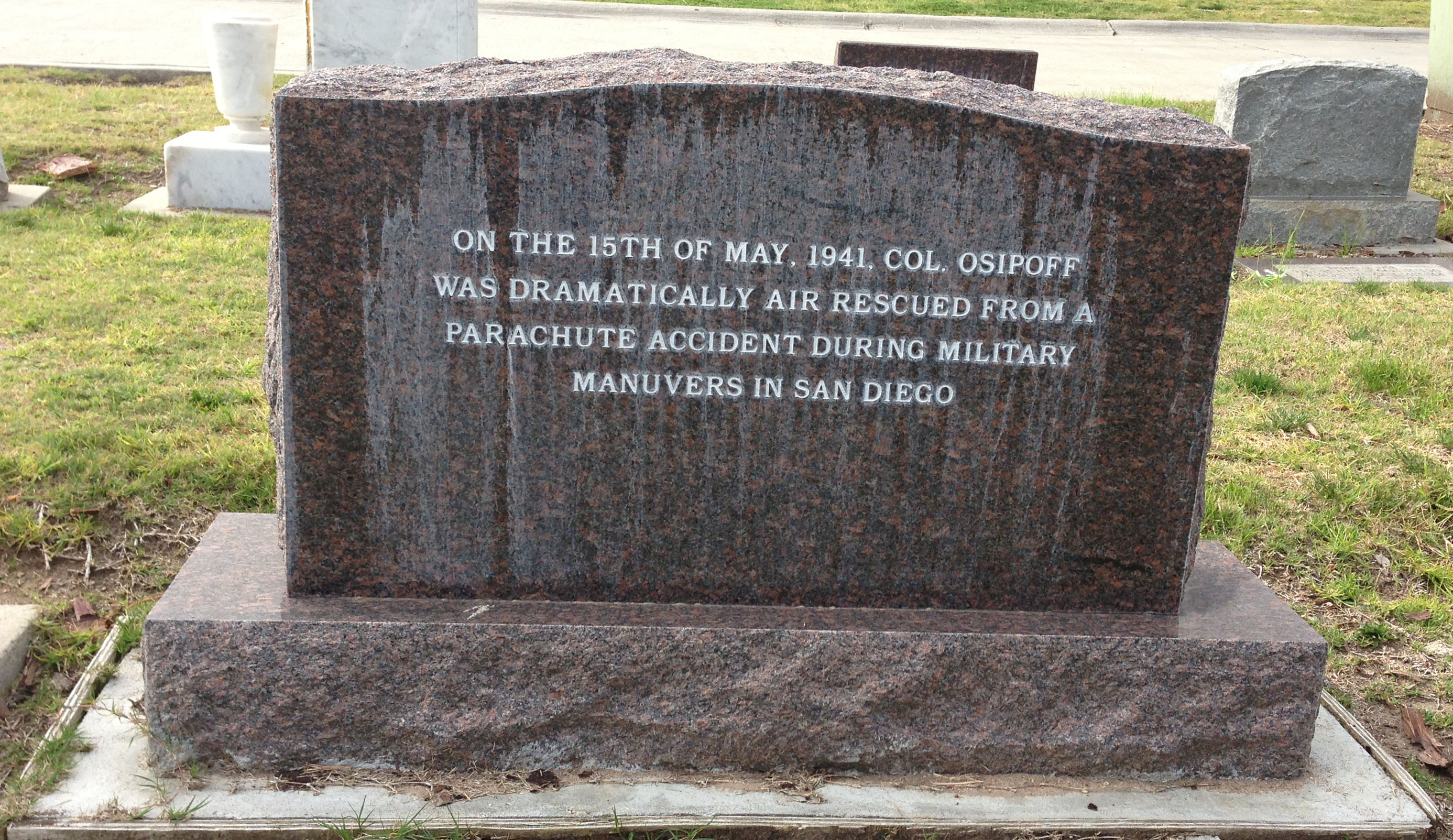Osipoff was one of the pioneering officers of the Marine Corps paratrooper program and loved the action and danger of the job. On May 15, 1941, Osipoff was involved in a training jump from a Marine Corps DC-2 aircraft (known as a R2D-1 in the Marines)that nearly cost him his life. When he jumped out of the plane, he became entangled with the ripcord straps of those who jumped before him as well as the static line. The entanglement left him hanging upside down and we was being severally battered by the straps and metal pieces fixed to them as well as slamming into the plane's fuselage. On the ground, Navy Lieutenant William Lowrey and Aviation Chief Machinist's Mate John R. McCants saw Osipoff's dilemma and ran to a SOC-1 bi-plane and took off to try to do an air rescue. They were successful in saving Osipoff after several minutes of harrowing attempts to cut him free. Below is a copy of the Distinguished Flying Cross both men received regarding their heroic accomplishment:
"GENERAL ORDERS:
Bureau of Naval Personnel Information Bulletin No. 293 (July 1, 1941)
CITATION:
The President of the United States of America takes pleasure in presenting the Distinguished Flying Cross to (Lt. William Lowry and Aviation Chief Machinist's Mate John R. McCants), United States Navy, for extraordinary heroism while participating in an aerial rescue on 15 May 1941. When Lieutenant Walter S. Osipoff, U.S. Marine Corps, attempted to jump from the R2D-1 airplane No. 9994 during a parachute training exercise, the shrouds of the partly opened parachute became entangled with the static cable and the rip-cord lines of other parachutes. Head down, he dangled helplessly about one hundred feet below and astern of the plane. Observing the plight of Lieutenant Osipoff from the ground, Lieutenant William Lowrey and Aviation Chief Machinist's Mate McCants, test pilots, attached to the Naval Air Station, San Diego, California, upon their own initiative took off, with Lieutenant Lowrey a the ctontrols of a Navy plane, the SOC-1 to attempt a rescue. Lieutenant Lowrey skillfully maneuvered his plane until after several attempts, Aviation Chief Machinist's Mate McCants, standing in the rear cockpit, was able to grasp Lieutenant Osipoff and insert part of his body, head first, into the rear cockpit. While Chief Aviation Machinist's Mate McCants was attempting to cut the shrouds of Lieutenant Osipoff's parachute, bumpy air threw the propeller of the SOC plane into the tail fairing of the Douglass, cutting off about twelve inches of the fairing cone as well as the entangled shrouds. With his plane encumbered with shround lines and a part of the parachute fouling the empennage, and the additional weight of an extra passenger partly out of the rear cockpit, Lieutenant Lowrey skillfully maneuvered his plane to a safe landing. This is considered one of the most brilliant and daring rescues within the annals of our Naval history. The skill, courage, initiative, and resourcefulness displayed by Lieutenant Lowrey and Aviation Chief Machinist's Mate McCants in effecting the rescue of Lieutenant Osipoff at the imminent risk of their lives were in keeping with the highest traditions of the Naval Service."
Osipoff was hospitalized for sometime due to the injuries he received from the accident and had high praise for the rescue by the two Navy men.
On December 7th of that year, the Japanese Empire attacked Pearl Harbor, Hawaii, propelling the United States into World War II. The Marine Corps training of the Para-marines and their sister units of the Marine Raiders continued training (the only difference in the Raiders and the paratroopers was how they were trained to enter the combat area; Raiders by sea, para's by air). Osipoff would be assigned to the 1st Paramarine Regiment as a company commander. The regiment was activated on April 1, 1943 under the command of Lieutenant Colonel Robert H Williams at Vella Lavella upon arrival from its training base at Camp Kiser in New Caledonia. The 1st Marine Para's, with around 3,000 men in three battalions was assigned to I Marine Amphibious Corps.
The first mission for the new para-marines was a successful amphibious assault on the islets of Gavutu and Tanambogo north of Guadalcanal in the Solomon Islands. They made short work of securing these two objectives. During September, the 1st Para Regiment was put with the 1st Raider Battalion under the command of Lt Col Merritt Edson. They occupied the ridge southeast of Henderson Field, Guadalcanal and enemy activity increased starting on September 11th and reached a peak during the night of September 13-14 when the Marine lines viciously repulsed strong and repeated assaults by determined Japanese forces. Battle of Bloody Ridge (or Edson's Ridge), scattered the Japanese aggressors. The para-marines were involved in numerous battles in the Solomon Islands to include Bougainville. Osipoff, now a major in the paramarines was in the thick of the action on Bouganville.
But in late 1943, the decision was made to disband the paramarines and the Raiders and use them mainly to fill positions in the newly formed 5th Marine Division. Osipoff and the rest of the parachutist never made a single combat jump during the war. By order of the Commandant the 1st Marine Parachute Regiment was disbanded on December 30, 1943. It officially ceased to exist on February 29, 1944.
Colonel Walter Stephan Osipoff, SN# , earned the following awards and badges for his service in the United States Marine Corps during World War II, Korean War and the Cold War:
- Silver Para-marine Jump Wings
- American Defense Medal
- American Campaign Medal
- Asiatic-Pacific Campaign Medal with three battle/campaign stars
- World War II Victory Medal
- Navy Occupation Medal with ASIA bar
- National Defense Service Medal
Osipoff was one of the pioneering officers of the Marine Corps paratrooper program and loved the action and danger of the job. On May 15, 1941, Osipoff was involved in a training jump from a Marine Corps DC-2 aircraft (known as a R2D-1 in the Marines)that nearly cost him his life. When he jumped out of the plane, he became entangled with the ripcord straps of those who jumped before him as well as the static line. The entanglement left him hanging upside down and we was being severally battered by the straps and metal pieces fixed to them as well as slamming into the plane's fuselage. On the ground, Navy Lieutenant William Lowrey and Aviation Chief Machinist's Mate John R. McCants saw Osipoff's dilemma and ran to a SOC-1 bi-plane and took off to try to do an air rescue. They were successful in saving Osipoff after several minutes of harrowing attempts to cut him free. Below is a copy of the Distinguished Flying Cross both men received regarding their heroic accomplishment:
"GENERAL ORDERS:
Bureau of Naval Personnel Information Bulletin No. 293 (July 1, 1941)
CITATION:
The President of the United States of America takes pleasure in presenting the Distinguished Flying Cross to (Lt. William Lowry and Aviation Chief Machinist's Mate John R. McCants), United States Navy, for extraordinary heroism while participating in an aerial rescue on 15 May 1941. When Lieutenant Walter S. Osipoff, U.S. Marine Corps, attempted to jump from the R2D-1 airplane No. 9994 during a parachute training exercise, the shrouds of the partly opened parachute became entangled with the static cable and the rip-cord lines of other parachutes. Head down, he dangled helplessly about one hundred feet below and astern of the plane. Observing the plight of Lieutenant Osipoff from the ground, Lieutenant William Lowrey and Aviation Chief Machinist's Mate McCants, test pilots, attached to the Naval Air Station, San Diego, California, upon their own initiative took off, with Lieutenant Lowrey a the ctontrols of a Navy plane, the SOC-1 to attempt a rescue. Lieutenant Lowrey skillfully maneuvered his plane until after several attempts, Aviation Chief Machinist's Mate McCants, standing in the rear cockpit, was able to grasp Lieutenant Osipoff and insert part of his body, head first, into the rear cockpit. While Chief Aviation Machinist's Mate McCants was attempting to cut the shrouds of Lieutenant Osipoff's parachute, bumpy air threw the propeller of the SOC plane into the tail fairing of the Douglass, cutting off about twelve inches of the fairing cone as well as the entangled shrouds. With his plane encumbered with shround lines and a part of the parachute fouling the empennage, and the additional weight of an extra passenger partly out of the rear cockpit, Lieutenant Lowrey skillfully maneuvered his plane to a safe landing. This is considered one of the most brilliant and daring rescues within the annals of our Naval history. The skill, courage, initiative, and resourcefulness displayed by Lieutenant Lowrey and Aviation Chief Machinist's Mate McCants in effecting the rescue of Lieutenant Osipoff at the imminent risk of their lives were in keeping with the highest traditions of the Naval Service."
Osipoff was hospitalized for sometime due to the injuries he received from the accident and had high praise for the rescue by the two Navy men.
On December 7th of that year, the Japanese Empire attacked Pearl Harbor, Hawaii, propelling the United States into World War II. The Marine Corps training of the Para-marines and their sister units of the Marine Raiders continued training (the only difference in the Raiders and the paratroopers was how they were trained to enter the combat area; Raiders by sea, para's by air). Osipoff would be assigned to the 1st Paramarine Regiment as a company commander. The regiment was activated on April 1, 1943 under the command of Lieutenant Colonel Robert H Williams at Vella Lavella upon arrival from its training base at Camp Kiser in New Caledonia. The 1st Marine Para's, with around 3,000 men in three battalions was assigned to I Marine Amphibious Corps.
The first mission for the new para-marines was a successful amphibious assault on the islets of Gavutu and Tanambogo north of Guadalcanal in the Solomon Islands. They made short work of securing these two objectives. During September, the 1st Para Regiment was put with the 1st Raider Battalion under the command of Lt Col Merritt Edson. They occupied the ridge southeast of Henderson Field, Guadalcanal and enemy activity increased starting on September 11th and reached a peak during the night of September 13-14 when the Marine lines viciously repulsed strong and repeated assaults by determined Japanese forces. Battle of Bloody Ridge (or Edson's Ridge), scattered the Japanese aggressors. The para-marines were involved in numerous battles in the Solomon Islands to include Bougainville. Osipoff, now a major in the paramarines was in the thick of the action on Bouganville.
But in late 1943, the decision was made to disband the paramarines and the Raiders and use them mainly to fill positions in the newly formed 5th Marine Division. Osipoff and the rest of the parachutist never made a single combat jump during the war. By order of the Commandant the 1st Marine Parachute Regiment was disbanded on December 30, 1943. It officially ceased to exist on February 29, 1944.
Colonel Walter Stephan Osipoff, SN# , earned the following awards and badges for his service in the United States Marine Corps during World War II, Korean War and the Cold War:
- Silver Para-marine Jump Wings
- American Defense Medal
- American Campaign Medal
- Asiatic-Pacific Campaign Medal with three battle/campaign stars
- World War II Victory Medal
- Navy Occupation Medal with ASIA bar
- National Defense Service Medal
Inscription
USMC
Family Members
Sponsored by Ancestry
Advertisement
Advertisement
